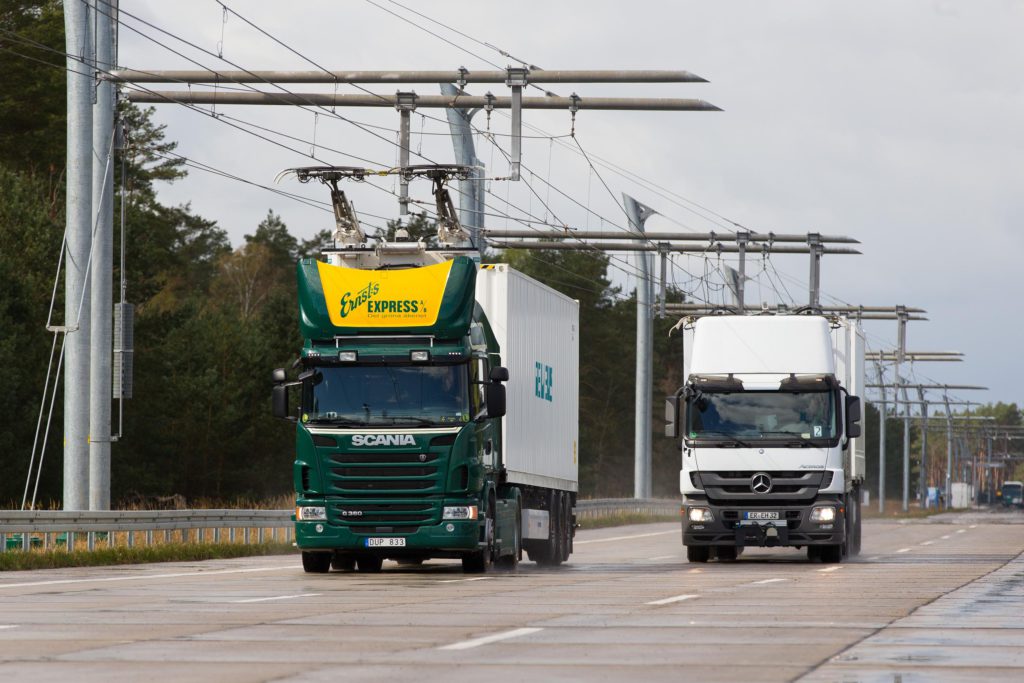Siemens to trial its ‘eHighway’ concept for electric trucks in Germany
15 August 2017

15 August 2017
Siemens has been commissioned by the German state of Hessen to build an overhead contact line for electrified freight transport on a 10km stretch of autobahn, similar to how electric trains draw power. The line, which supplies electricity for the electric drive of a hybrid truck, will be installed on the A5 autobahn between the Zeppelinheim/Cargo City SÃœd interchange at Frankfurt Airport and the Darmstadt/Weiterstadt interchange.
Siemens originally presented its innovative ′eHighway’ concept in 2012 but this field trial marks the first time it will be tested on a public highway in Germany. Siemens will be responsible for the planning, construction and, as an option, maintenance of the system. The line is being built as part of the joint project ′Electrified, innovative heavy freight transport on autobahns’ (ELISA) of Germany’s Federal Ministry for the Environment, Nature Conservation, Building and Nuclear Safety (BMUB). Hessen Mobil, responsible for road and transport management in the German state, is managing the project.
′Construction of the system will demonstrate the feasibility of integrating overhead contact systems with a public highway. The system will be used for real transport networks, and prove the practicality of climate-neutral freight transport in the urban region of Frankfurt,’ said Gerd Riegelhuth, Head of Transport of Hessen Mobil. Battery-powered trucks are technically challenging due to their high power requirements.
′With the eHighway, we’ve created an economically viable solution for climate-neutral freight transport by road. Our technology is an already existing and feasible alternative to trucks operating with internal combustion engines,’ says Roland Edel, Chief Technology Officer of the Mobility Division. Trucks other heavy duty vehicles contribute a disproportionately high share of road transport emissions.
The eHighway is twice as efficient compared to internal combustion engines. That not only means cutting energy consumption in half, but also significantly reducing local air pollution. The core element of the system is an intelligent pantograph on the trucks combined with a hybrid drive system. Trucks equipped with the system operate locally emission-free with electricity from the overhead line and automatically switch to a hybrid engine on roads without overhead lines.
Whereas electric cars are slowly but surely gaining market share, electric trucks are comparably in their infancy. Daimler recently commenced production of the Mitsubishi Fuso eCanter, the world’s first all-electric light duty truck, in Portugal but this is designed for inner-city distribution and only has a range of 100km and a load capacity of two to three tons. In response to Tesla’s plans to produce an electric truck, the new head of Daimler’s truck division, Martin Daum, said that the technology is not yet sufficiently advanced to support long-range electric trucks. However, the introduction of automated truck convoys on European roads could be a step closer following the release in May of a detailed timeline that will see semi-automated HGVs on motorways by 2025.
Photograph courtesy of Siemens AG – www.siemens.com/press